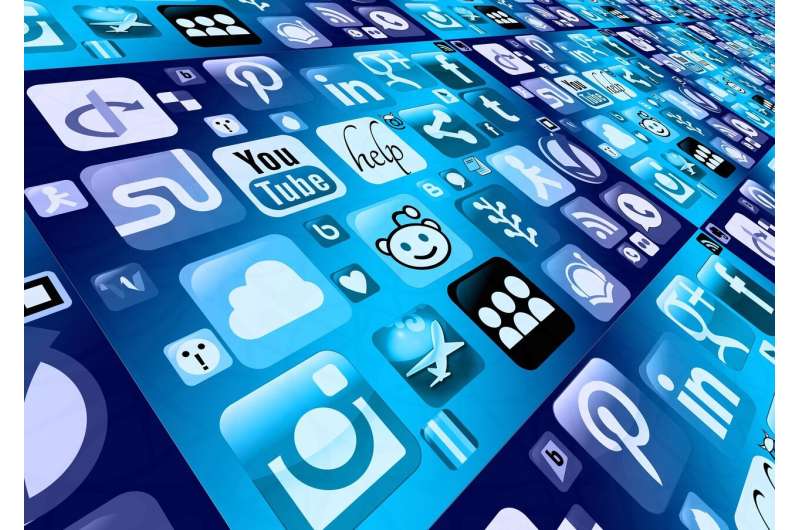
During the second wave of the COVID-19 pandemic, the risk of depression more than doubled among those who share photos of themselves or their close relations (including their pets) on social media on a daily basis, according to a recent Hungarian study.
“The trend measured during the first wave has now intensified. At that time, it was shown that compared to the pre-epidemic period, the use of social media and the willingness to publish self-representative images and videos increased significantly. For those who sent pictures and videos of themselves or their close relations at least once a day during the first wave on Messenger, the platform where the frequency of sharing such content increased the most, the proportion of people at risk of depression was 19%, meanwhile it was 16% in the total sample. However, during the second wave, 40% (!) of daily image sharers showed signs of major depressive disorder, while it was 25% in the total sample,” said communication and media expert Alexandra Valéria Sándor, a Ph.D. student at the Doctoral School of Sociology of Eötvös Loránd University, Budapest.
The study was conducted in two stages using an online questionnaire during the peak periods of the two waves in Hungary: from April 22 to May 11, and from November 20 to December 2, 2020. The first questionnaire measured the differences between the pre-COVID19 period and the first wave with 170 participants, while the second questionnaire measured the period between the two waves and the second wave with 119 participants of which 100 sets of responses were analyzed so that the sample corresponded to the former with a maximum difference of 0.5% in terms of gender and age groups for comparability.
Regarding the time spent on social media, the biggest increase was seen during the first wave: Then, 54% of respondents said they spent more time on social media than before the pandemic. The time devoted to this, however, increased again for more than a third of participants during the second wave. “I think anyone who is at home uses these apps more,” pointed out one of the respondents. Another wrote, “my screen time has increased significantly, clearly showing that I use more social media. I use it mostly to keep in touch with my friends.”
Participants still perceived the change in their own habits significantly differently from what they experienced from others. During the first lockdown period, 42% thought that others’ social media activity had “greatly increased” and 46% said it had “slightly increased.” During the second wave, 15% perceived a greatly increased social media activity among others compared to the first wave, while 46% also chose the “slightly increased” option.
The number of reactions received (likes, comments) also showed a higher increase according to the recent data. Nearly two-thirds of respondents (62%) believed that they received more reactions during the second wave than during the first wave, while only 24% received more reactions during the first wave compared to the pre-pandemic period.
However, the situation was reversed for the reactions given: in the spring, 40% of participants were more generous with likes and comments than before the pandemic; now 30% of them have liked and commented more compared to the first wave. “I pay more attention to the pictures of others after 8 p.m.,” revealed one of the participants in response to the second wave questionnaire, at the time of the 8 p.m. to 5 a.m. curfew in Hungary.
As for the social media platforms used by the participants, the most significant change was observed on Facebook: the most common response was that the participants spent “more than two hours” a day there, compared to only 9% of them before the pandemic. Facebook usage of this intensity halved between the two waves and then increased again.
To monitor the intensity of self-representation, respondents also stated the frequency with which they posted or sent pictures and videos of themselves or their close relations on each social media platform before, during, and between the COVID-19 pandemic waves. Nearly 18% of them shared such content on Messenger multiple times a day(!) during the first wave, while 8% said they had done the same before the pandemic. The decline between the two waves and then the re-growth during the second wave almost followed the epidemic curve.
In terms of the form of self-representation, selfies were the most common in all periods on all the platforms studied. “There are a lot more selfies (in makeup or face mask),” wrote one of the respondents during the second wave.
To obtain a basic assessment of the mental health of participants, the Patient Health Questionnaire-2 (PHQ-2) was administered through the question “Over the last two weeks, how often have you been bothered by the following problems?” These problems included “little interest or pleasure in doing things” and “feeling down, depressed, or hopeless.” The possible responses were “not at all” (0 points), “several days” (1 point), “more than half the days” (2 points), and “nearly every day” (3 points). Final PHQ-2 scores ranged from 0-6. A score of at least three indicates the possibility of major depressive disorder and suggests that further examinations are necessary.
“Based on these data, not only has the time spent on social media increased again during the second wave of the COVID-19 pandemic but sharing self-representative content has also become more common. There is a stronger link between deteriorating mental health and increased willingness to use social media, which raises important societal issues and deserves further in-depth research, ” concluded Alexandra Valéria Sándor, who presented the results at an online conference in Princeton in January.
Source: Read Full Article
